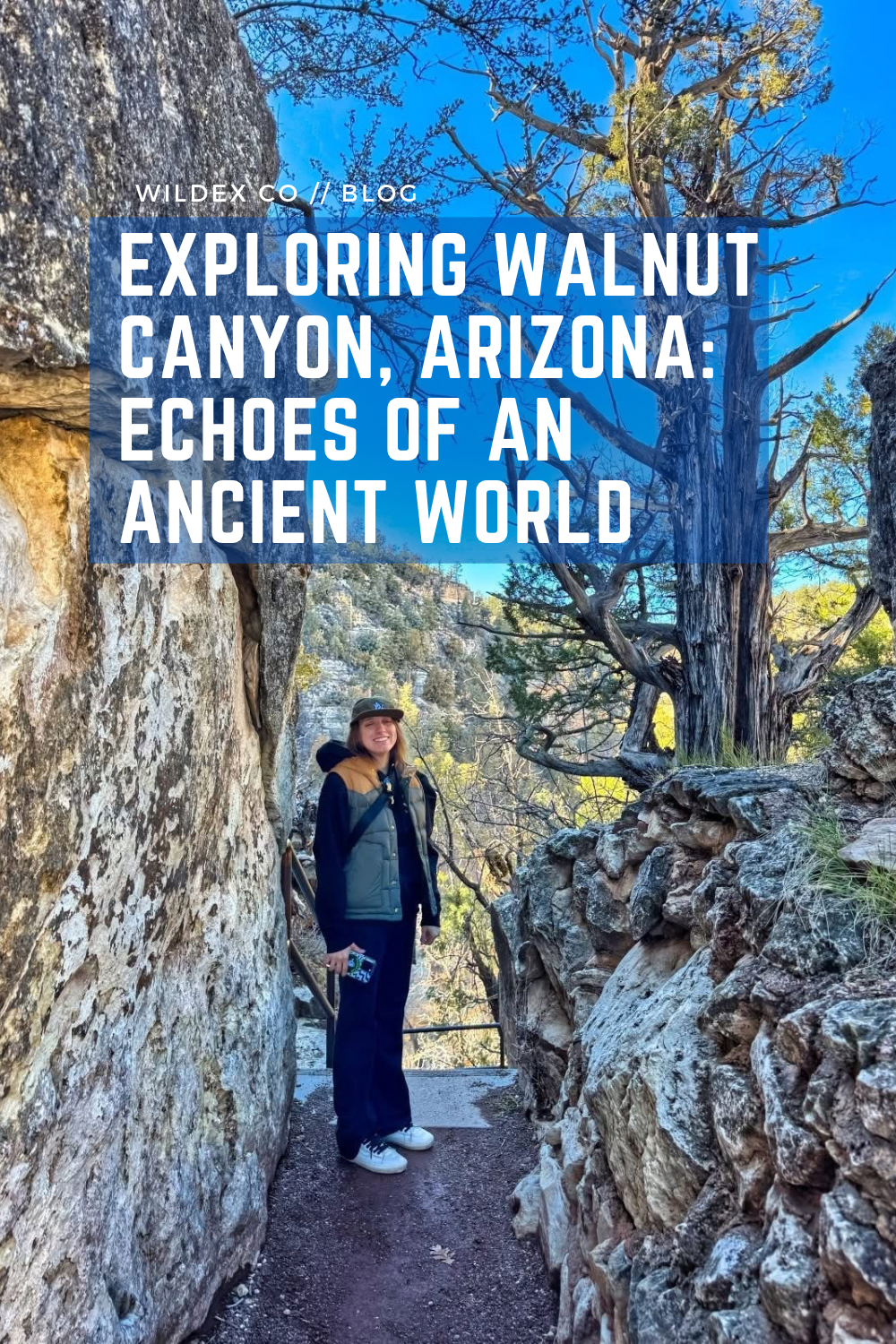
Exploring Walnut Canyon, Arizona: Echoes of an Ancient World
Share
If you listen closely at Walnut Canyon National Monument, the walls whisper stories of the past. This strikingly rugged chasm, carved by time and tenacity, holds more than just scenic views—it’s a portal into an ancient civilization, a testament to resilience, and an unexpected haven for life in the high desert. Unlike the Grand Canyon’s overwhelming vastness or Sedona’s polished tourism, Walnut Canyon offers something different: an intimate, raw connection to history and nature.

A Canyon Etched by Time
At first glance, Walnut Canyon looks like a rugged tear in the Arizona landscape—steep, limestone cliffs dropping into a winding, green oasis. Over millions of years, the forces of water and wind sculpted this deep ravine, but it wasn’t just geology at work here. Around 700 years ago, the Sinagua people made their homes within the canyon walls, creating a lifestyle that defied the harshness of the desert.

Sinagua, meaning “without water” in Spanish, may seem like an ironic name for a people who mastered survival in this arid land. Their homes, tucked into alcoves along the canyon’s sheer cliffs, weren’t just shelters—they were strategically placed for insulation, protection, and access to the life-sustaining trickle of Walnut Creek below. These weren’t nomads or wanderers but skilled agriculturalists, traders, and architects of a world now frozen in stone.
Walking Among the Ancients: The Island Trail
For those willing to descend 185 vertical feet into the canyon (and later, climb back up), the Island Trail is an immersive walk into the past. This one-mile loop winds through 25 cliff dwellings, where the Sinagua lived, worked, and raised families. Unlike many historical sites where you observe ruins from a distance, here you walk within the remains, stepping through doorways worn smooth by centuries of wind and time.
Each alcove whispers a different story. Imagine waking up in a stone house carved directly into the rock, the morning sun casting long shadows across the canyon floor. The Sinagua adapted to this landscape with remarkable ingenuity—harvesting corn on the mesa tops, storing food in cool rock crevices, and trading turquoise and macaw feathers with cultures as far away as Mexico.
And then, suddenly, they were gone. By the 13th century, the Sinagua vanished, leaving behind their dwellings but no written record of their fate. Did they integrate into Hopi or Zuni cultures? Did prolonged drought force them out? The canyon holds the evidence, but the full answer remains just beyond reach.
Not Just Rocks: A Living Ecosystem
Despite its dry, rocky appearance, Walnut Canyon is anything but barren. Its elevation—6,690 feet above sea level—creates a microclimate where unexpected life thrives. Ponderosa pines cling to the upper rim, while cacti, agave, and wildflowers color the canyon slopes below. Hidden springs nourish cottonwoods and willows, and if you’re lucky, you might spot rock squirrels, peregrine falcons, or even a shy bobcat weaving through the undergrowth.
This diversity makes Walnut Canyon a borderland of ecosystems, where the Sonoran Desert and the high-altitude Colorado Plateau collide. Few places in Arizona offer this stark contrast within such a small area. It’s one of the reasons the Sinagua could thrive here—and one of the reasons Walnut Canyon still feels alive today.
Beyond the Trail: The Silent Majesty of the Rim
For those who prefer less strenuous exploration, the Rim Trail offers stunning views without the climb. This short, accessible path leads to a reconstructed pithouse and ancient farming sites, where early inhabitants cultivated crops on the mesa’s fertile soil. Standing at the edge, gazing across the vast, layered canyon, it’s easy to understand why this place was sacred to those who came before us.
And yet, Walnut Canyon remains somewhat of a hidden gem. Unlike its more famous northern neighbor, the Grand Canyon, it doesn’t pull in millions of visitors. There are no tourist-packed shuttles, no overpriced cafes. Just you, the wind, and the echoes of an ancient world.
Final Thoughts: Why Walnut Canyon Stands Apart
Walnut Canyon isn’t just a stop on the way to Flagstaff or a footnote in Arizona’s archaeological history—it’s a place that demands presence. It’s a place where the past isn’t confined to textbooks but laid bare in the rocks around you.
If you’re looking for an adventure that blends history, mystery, and raw natural beauty, skip the crowds and step into Walnut Canyon. Here, time moves differently, and if you pause long enough, you just might feel the presence of those who walked these paths long before us.I’m